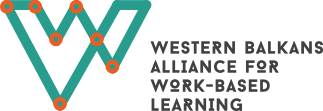Quality of WBL in Bosnia and Herzegovina
Quality of VET has been assured in Bosnia and Herzegovina with traditional methods. The internal quality system is based on annual year plans which each secondary school submits to the competent ministry and pedagogical agencies. Each year, VET schools prepare a detailed overview of the implemented programs (classes) and related statistical data.
The activities of several EU projects and the project of KulturKontakt Austria in BiH have made significant progress in the field of quality assurance of VET.
Within the framework of the EU project “Development of a Qualification Framework for Lifelong Learning”, the Quality Assurance Manual for Vocational Education and Training has been developed with self-evaluation and external evaluation documents and system-level evaluation.
The activities of KulturKontakt Austria were devoted to developing guidelines, establishing and ensuring the quality of practical teaching in secondary vocational education in BiH. Within the framework of the implemented activities, the following are also developed: Guidelines for practical training; Handbook for the practical training coordinator;Handbook for the Implementation of Different Forms of Work- Based Learning.
Quality Assurance model of practical training
The quality assurance system has two basic elements: internal and external evaluation (self-evaluation by the schools and external evaluation). The quality assurance process encompasses all activities and techniques which are aimed at eliminating the causes of unsatisfactory results in all important phases. In VET schools in BiH, the Organizer/ coordinator pf practical training is responsible for quality assurance of the practical classes.
Evaluation
Evaluation determines the actual situation in performing practical classes in a company. The practical lesson organizer, on the basis of the obtained results, identifies the mistakes and problems that occur in the process. In order to improve the quality of work, the organizer of practical teaching provides an analysis that will compare the planned and achieved results.
Self-evaluation
Self-evaluation of practical teaching enables identification of strengths and weaknesses and comparing performance with set goals and plans. On this basis, the possibilities for improvement are determined, as well as the goals for the next period and the activities necessary for achieving these goals. Self-evaluation implies the involvement of all employees at school, students and parents as well as all stakeholders (employers, companies, local community, professional institutions and associations).
Collecting evidence and forming proof
Much of the evidence is collected from the annual program of school work, school documentation, reports and other existing sources of data. These are information about pupils, teachers, achievements of students, material resources, and similar. Besides this, the organizer of practical training also collects specific information for practical training. For example, data on companies, mentors in companies, conditions for conducting practical education, ways of offering support to students and similar data. All actors should be actively involved in the process of monitoring and collecting feedback. The usual method of receiving feedback is using questionnaires but methods of direct conversations, workshops, focus groups etc. are also being used.
The organizer of practical training uses indicators for measuring the quality of practical training performed in companies, such as:
The student:
– Applies his theoretical knowledge in practice,
– Acquires new knowledge and skills through practical lessons,
– Works independently and responsibly,
– Completes the tasks in a competent way,
– Invokes the interest of the company for conducting ferial practice,
– Can meet the requirements of the labor market,
– Takes responsibility,
– Parents are satisfied with the practical training in the companies / ferial practices,
– Shows practical knowledge at a higher level,
– Applies acquired knowledge and skills (which he/she has acquired on practical training in the company),
– Knows and experiences the difference between school and entrepreneurial conditions for work,
– Deepens his knowledge of a future profession by engaging in some work processes in the company,
– The company chooses students for further engagement by at least once a year inviting him to work on some manifestation / engagement,
– After practical training, he/she shows more interest in practical engagement,
– Demonstrates self-initiative and a sense of responsibility, and his mentor in the company develops a positive opinion of his / her business,
– Participates in team work,
– Contributes to a better school image with work,
– Companies employ students who had practical training in their company recently
– Achieves objectives defined by the curriculum
– Receives positive feedback from the company.
Improvement Plan:
The Improvement Plan (Improvement of the quality of work) contains the priority areas where improvement is necessary, objectives, activities for achieving improvement, clearly delegated responsibilities, timeframe, expense plan, resource plan, and ways of monitoring improvement.
Standards:
Quality standards of practical training are linked to the quality standards on school level and stem from them. The self-evaluation team defines the levels which should be reached and decides whether a comprehensive self-evaluation will be conducted or only for certain standards. When the school does not have formed self-evaluation teams, then the self-evaluation is performed by the organizer of practical training.

